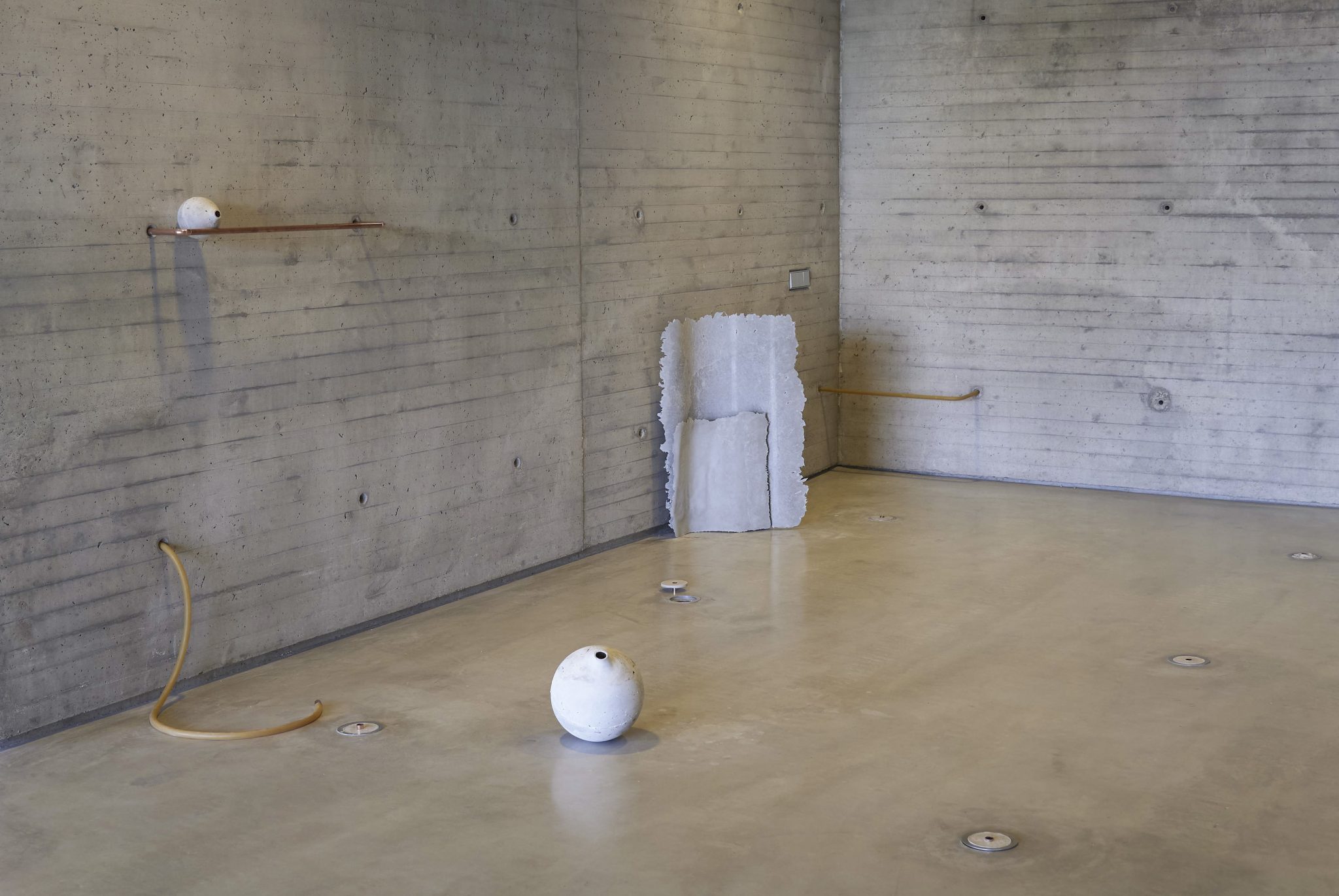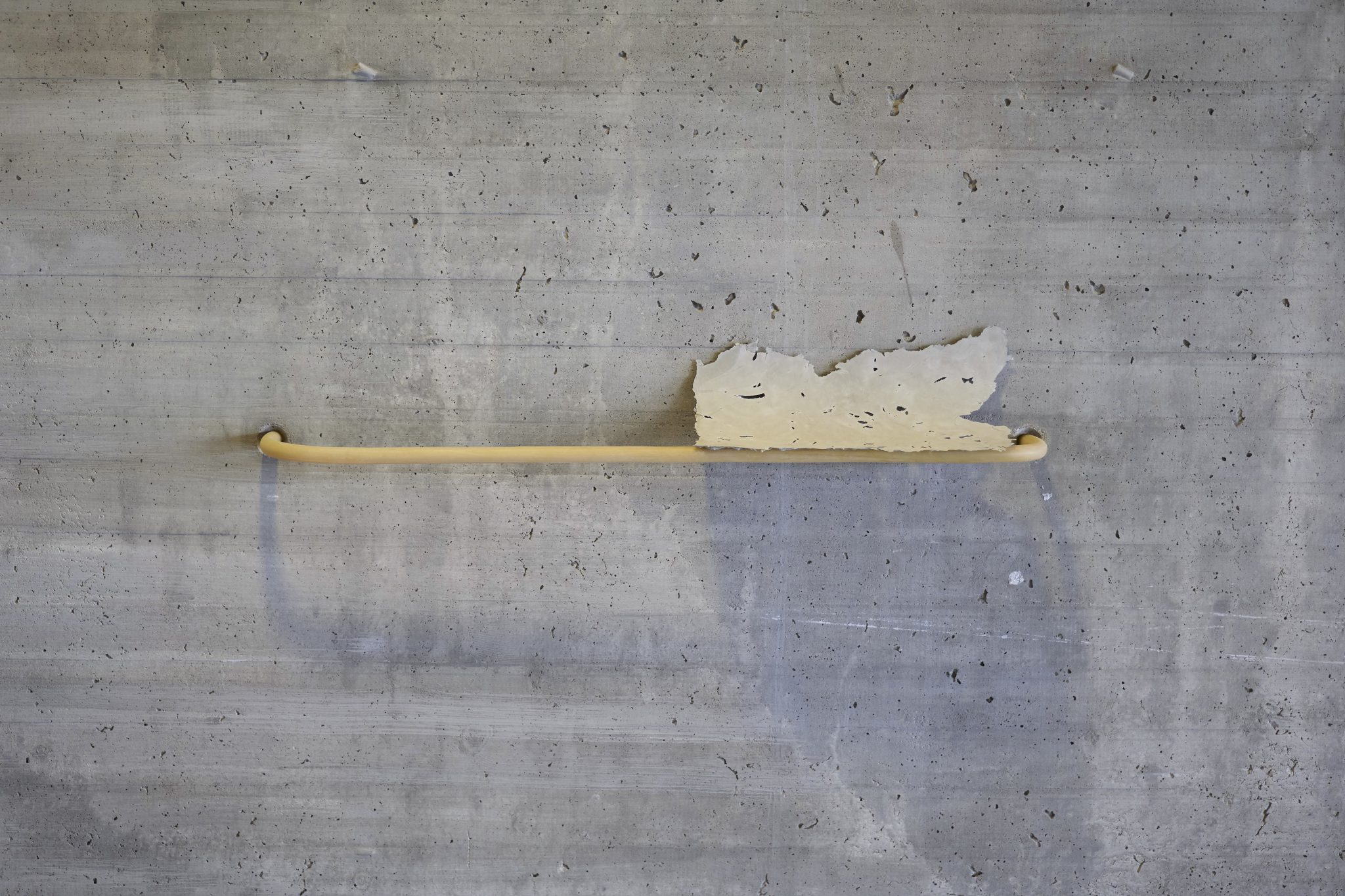Mercedes Pimiento
Centro de Creación Contemporánea de Andalucía, Córdoba.
23.11.2020_14.01.2021
The C3A Research and Production Programme consists of a six-week stay in which a curator invites six transdisciplinary artists to develop a project, being able to make use of the center's own resources and facilities.
As part of my ongoing research, I have developed the project 'Technical Poros', a site-specific project in which I have delved into some of my fields of interest, such as the material relationships between body and architecture in contemporary urban space, through the case study of the C3A building.
In this project I took the Nieto & Sobejano building as a starting point, understanding it as a porous organism, in which the infrastructures are inserted following a homogeneous pattern along a series of hollow spaces that surround its interior spaces —technical floors, ceilings and corridors. These infrastructures are accesible through the technical pores, which are a series of perforations situated in an isotropic distribution along all the surfaces of the building.
This type of infrastructural approach, as well as the fact that the building plan follows a self-similar, combinatorial geometric pattern without spatial hierarchies, links to a series of investigations and interests about a certain tradition of architectural utopias, such as those developed in the 1970s by Archigram, Archizoom or Superstudio studios, which later would be of great influence on architecture and architectural criticism of the 90s and later, on authors such as Rem Koolhaas or Martin Pawley.
From the study of the structure of the building and its materials — mainly concrete, steel and glass—, I have developed an installation that consists of a modular system of ducts that passes through its pores, generating a continuous circuit that aims to make its infrastructural design visible and corporeal. In addition, as part of this system there are also a series of pieces that, based on the building's own materials, propose other forms of relationships between body and architecture through sound and voice.
In relation to its acoustic properties, the C3A building is a very tight structure, since its surfaces are composed of very rigid, dense and smooth materials which have, therefore, very low sound absorption capacities. As part of the intervention I have created a series of concrete pieces —membranes and resonators— with specific acoustic properties, which emerge from the building's surfaces as sound-sensitive organs, thus proposing alternatives to the ways in which the body and architecture affect each other and allow themselves to be affected.
Firstly, the membranes are thin and curved cement and fiberglass surfaces, like fragments of the skin torn from the wall, which act as diffusing surfaces, intervening in the standing waves that are generated in the interior spaces. Secondly, the resonators —based on Helmholtz resonators— are a type of acoustic absorber that consists of a hollow cavity that is opened by a narrow neck. Depending on their dimensions, the resonators vibrate and absorb a certain sound frequency, which they dissipate in the form of thermal energy. In this case, each of the concrete resonators is designed to absorb a specific frequency within the spectrum of the human voice, functioning as bumps in the building that vibrate and are affected by the voice.
The results of the research and production stay have been formalized in the collective exhibition ‘Living-together. On being apart in common', curated by Jesús Alcaide, which can be visited from January 14 to April 4, 2021 at the C3A.



